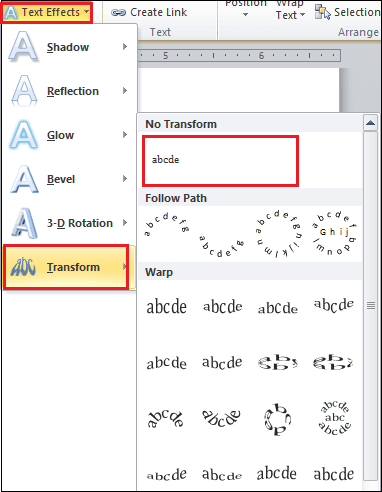

To stay on topic, I copied the first two paragraphs from the Wikipedia page for Transformer models. happy_tt = HappyTextToText("DISTILBART", "sshleifer/distilbart-cnn-12-6") The first position argument is for the model type, so in this case, it is "DISTILBART." Other examples of model types include "BERT," "ROBERTA," and "T5." The second position argument is for the model's name. To do this, we will first create a HappyTextToText object. from happytransformer import HappyTextToTextĪs discussed, we will use the most downloaded summarization Transformer model that's available on Hugging Face's model distribution network. So, we will import a class from Happy Transformer called HappyTextToText. This means the model produces original standalone text given a text input. Summarization is a "text-to-text" NLP task.
HOW TO TRANSFORM TEXT IN WORD 2013 INSTALL
pip install happytransformer Instantiation Happy Transformer is available on PyPI and can be downloaded with simple pip command. We will use an open-sourced Python package I am the lead maintainer of called Happy Transformer.
HOW TO TRANSFORM TEXT IN WORD 2013 HOW TO
In this article, I will explain how to implement what is currently the most downloaded text summarization model called " sshleifer/distilbart-cnn-12-6." I will also discuss using a model called T5. Currently, 234 text summarization models have been uploaded to the network, which you can view here. Hugging Face launched a model distribution network that allows anyone to upload Transformer models. Since then, text summarization has come a long way, and now you can implement state-of-the-art text summarization Transformer models with just a few lines of code.

For example, in 2013 a 17-year-old named Nick D'Aloisio sold a news summarization app called Summly to Yahoo for $30 million. Text summarization has many useful applications.


 0 kommentar(er)
0 kommentar(er)
